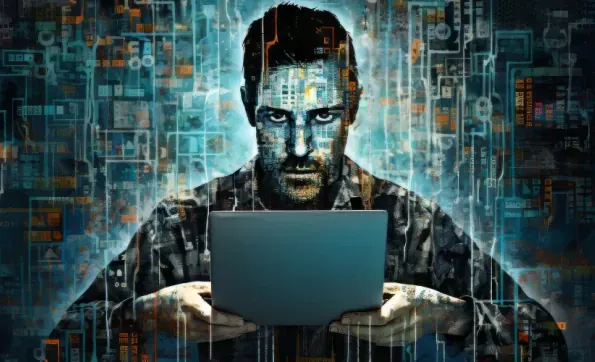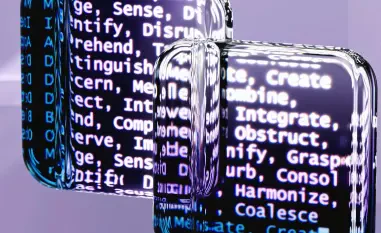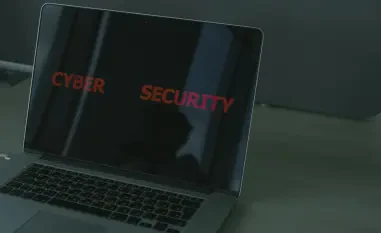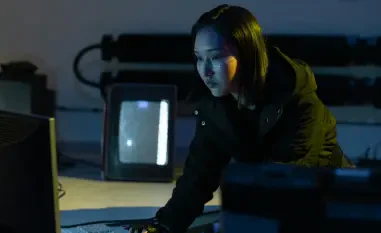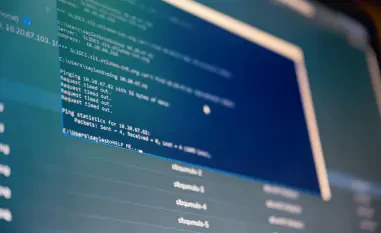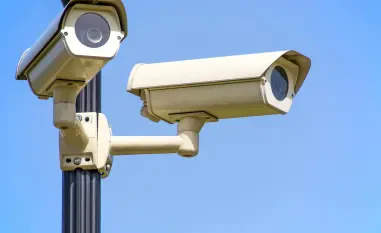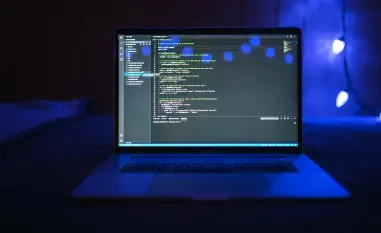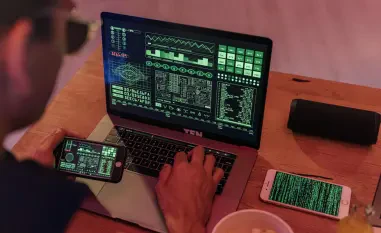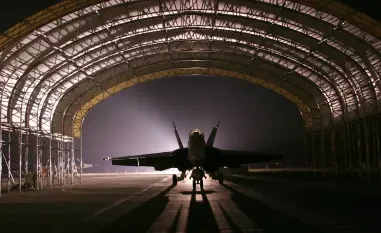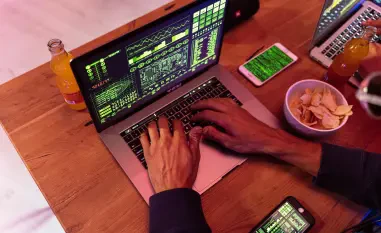The rapid advancement of artificial intelligence (AI) has revolutionized various industries, including cybersecurity. As cyber threats become increasingly sophisticated, the role of AI in threat detection has grown significantly. However, this raises a critical question: Can AI outshine human creativity in cybersecurity threat detection? This article delves into the interplay between AI and human creativity in the realm of cybersecurity, exploring their respective strengths and limitations.
The Role of Creativity in Cybersecurity
The Necessity of Creative Thinking
Creativity is a cornerstone of effective cybersecurity. Cyber threats are constantly evolving, often orchestrated by highly skilled adversaries. To stay ahead, cybersecurity professionals must think creatively, anticipating potential attacks and devising innovative solutions. This requires a level of problem-solving that goes beyond routine tasks, enabling professionals to identify and mitigate threats that are not immediately apparent. Complex cyber threats call for an agile and dynamic approach, where thinking outside the traditional boundaries is paramount.
For instance, an innovative mindset is crucial when it comes to devising countermeasures against advanced persistent threats (APTs) and zero-day exploits. These sophisticated attacks demand a deep understanding of potential vulnerabilities, as well as the creative application of defensive strategies to outmaneuver adversaries. By cultivating a culture of creativity, cybersecurity teams can stay one step ahead, continuously refining their tactics to address emerging threats effectively. In a field where predictability can be a weakness, creative thinking can be one of the most valuable assets.
Balancing Routine and Creative Tasks
While much of cybersecurity work involves routine tasks such as monitoring logs and filtering through false positives, creative tasks are essential for a comprehensive and proactive defense strategy. Automating mundane tasks allows professionals to concentrate their efforts on more complex and innovative tasks, including predicting and mitigating unknown threats. Novel phishing attacks and zero-day vulnerabilities are examples of threats that require a nuanced understanding and a creative approach to identify the subtle indicators of compromise.
Cybersecurity professionals must be adept at recognizing patterns that fall outside of typical threat profiles, leveraging their knowledge and intuition to form strategic responses that adversaries might not anticipate. This balance between routine and creativity ensures that while AI systems take on labor-intensive repetitive tasks, human experts are free to apply their ingenuity where it matters most. By allowing technology and human creativity to coexist harmoniously, organizations can develop more resilient and adaptive cyber defenses.
AI’s Role in Cybersecurity
Automating Routine Tasks
AI has proven invaluable in automating many routine cybersecurity tasks, dramatically improving efficiency and accuracy. By efficiently handling large volumes of data, AI can monitor logs, detect anomalies, and address false positives with remarkable speed and precision. This automation frees up human professionals to focus on more complex and creative aspects of threat detection. As a result, response times are shortened, and the overall effectiveness of cybersecurity operations is enhanced.
Additionally, AI-driven tools can swiftly correlate data from various sources, providing a comprehensive view of the security landscape. This ability to process and analyze vast amounts of information in real-time is critical, especially when dealing with the sheer scale of data generated in modern networks. By automating these routine tasks, AI enables cybersecurity professionals to allocate their time and resources more strategically, focusing on areas that demand human insight and innovation.
Enhancing Human Efforts
Beyond automating routine tasks, AI can significantly enhance human efforts in cybersecurity. AI systems can assist in rapid data analysis, providing insights that aid human decision-making. Generative AI, in particular, offers tools for faster prototyping, coding, and visualizing ideas, streamlining the creative processes for cybersecurity professionals. By leveraging these tools, security experts can quickly test and refine their theories, leading to more robust and adaptable solutions.
Moreover, AI can serve as a force multiplier by detecting patterns and anomalies that might escape human notice. In scenarios where time is of the essence, such as during an active cyber attack, AI’s ability to quickly process and analyze data can provide critical advantages. The combination of AI’s analytical power and human creativity ensures that responses are both swift and innovative, increasing the likelihood of successfully mitigating threats. This synergy between human intelligence and AI’s computational abilities forms a formidable defense against cyber adversaries.
Concerns and Limitations of AI
Over-Reliance on AI
Despite AI’s capabilities, there are concerns about an over-reliance on the technology. Excessive dependence on AI could lead to a degradation of essential analytical and critical thinking skills among cybersecurity professionals. If AI takes over too many tasks, there is a risk that human experts might become overly reliant on the technology, neglecting their strategic and innovative roles. Maintaining a balance where human expertise remains at the forefront of threat detection and response is crucial.
The importance of human oversight becomes evident when considering the nuanced nature of cyber threats. AI, while powerful, can sometimes misinterpret data or miss subtle indicators that a trained human eye would catch. To ensure that critical skills are not lost, cybersecurity teams should use AI as a tool to augment, rather than replace, their creative and analytical efforts. By fostering an environment where AI supports human endeavors, organizations can safeguard the critical thinking skills that are indispensable in the ever-evolving cybersecurity landscape.
AI’s Susceptibility to Errors
AI systems are not infallible and can misdiagnose situations due to algorithmic biases or inaccuracies. This underscores the necessity for human oversight and critical thinking to validate AI’s findings. While AI can process data and generate reports at incredible speeds, the interpretation of these results often requires the contextual understanding that only human experts can provide. This human element is essential for translating AI’s output into actionable strategies and responses.
In addition to algorithmic biases, AI systems can also be susceptible to adversarial attacks designed to exploit their weaknesses. Cybercriminals are constantly developing new techniques to deceive AI systems, making it essential for human experts to remain involved in the threat detection process. Continuous human oversight ensures that AI-generated data is accurate, relevant, and interpreted correctly within the broader context of the organization’s security posture. This collaborative approach mitigates the risks associated with AI’s limitations and enhances overall threat detection capabilities.
AI and Human Creativity: A Symbiotic Relationship
Complementary Roles
Experts suggest that AI and human creativity should be viewed as complementary rather than competitive. While AI can take over many technical tasks, human creativity remains irreplaceable. The integration of AI should elevate the role of soft skills such as communication, collaboration, and strategic thinking, which are crucial for comprehensive cybersecurity practices. This complementary relationship allows AI and human experts to bring out the best in each other, leading to more effective and innovative security solutions.
For instance, AI can be used to identify potential threats and send alerts, while humans can analyze the context and determine the appropriate response. This dynamic ensures that while AI handles time-consuming and data-intensive tasks, human professionals can focus on strategy and decision-making. It is this combination of technical prowess and human insight that forms the basis of a robust cybersecurity defense, capable of adapting to new challenges and staying ahead of adversaries.
Synergy for Robust Defense
Cybersecurity demands a synergy between the technical prowess of AI and the conceptual foresight of human experts. This combination ensures robust defense strategies, leveraging AI’s data processing capabilities and human creativity’s innovative problem-solving. Together, they form a dynamic and resilient approach to cybersecurity. By fostering collaboration between AI systems and human professionals, organizations can develop more adaptive and proactive security measures.
The key to achieving this synergy lies in the seamless integration of AI into existing workflows, ensuring that both humans and machines contribute to the overall defense strategy. AI can enhance situational awareness by providing real-time insights and recommendations, while human experts can evaluate and act on these inputs, applying their experience and intuition. This partnership ensures that cybersecurity defenses are not only technically sound but also strategically insightful, capable of evolving in response to emerging threats.
Future Leadership and Skills Development
Nurturing Future Leaders
AI tools can play a pivotal role in identifying and nurturing future leaders in cybersecurity. By enabling prompt idea visualization and prototype creation, AI can help professionals develop and refine their innovative thinking. As upcoming cybersecurity leaders gain experience, AI can assist in honing their skills, helping them to quickly adapt to and address new challenges. This capability ensures that the next generation of cybersecurity experts is well-prepared to handle the complexities of the evolving threat environment.
Moreover, AI can aid in recognizing and fostering talent by identifying individuals with a propensity for innovative thinking and creative problem-solving. By leveraging AI to streamline training and development programs, organizations can create a pipeline of capable cybersecurity professionals who are adept at both leveraging technology and applying their ingenuity. This approach not only equips future leaders with the necessary skills but also helps in maintaining a culture of continuous learning and adaptation.
Emphasizing Soft Skills
The rapid progress of artificial intelligence (AI) has transformed various sectors, and cybersecurity is no exception. With cyber threats growing more sophisticated by the day, AI’s role in threat detection has become increasingly vital. But this prompts a crucial question: Can AI surpass human ingenuity in identifying cybersecurity threats? This article examines the interaction between AI and human creativity within the cybersecurity field, highlighting their distinct advantages and drawbacks.
While AI excels at quickly analyzing vast datasets and identifying patterns that might elude human analysts, human creativity brings flexibility, intuition, and an understanding of context that AI struggles to replicate. AI can detect known threats and predict potential risks using algorithms, but it lacks the innovative thinking required to anticipate novel attacks. Conversely, humans can adapt strategies and think outside the box. Ultimately, the most effective approach merges both AI’s analytical power and human ingenuity to create a robust defense against ever-evolving cyber threats.
